Plastic ocean litter boosts deadly infections in corals
Corals in contact with plastic are 20 times more likely to be infected with flesh-eating diseases
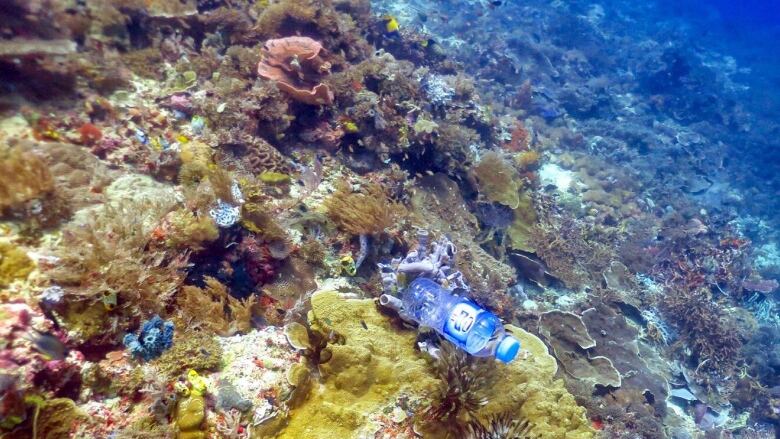
Garbage like disposable diapers, plastic bagsand snack wrappers isgetting into the ocean and snagging on coral reefs, leading to deadly infections that literally eat the corals alive, a new study suggests.
A four-year survey of 125,000 corals in 150 reefs in the Asia-Pacific region found that corals in contact with plastic debris had an 89 per cent chance of having three nasty diseases:
- Skeletal eroding band disease.
- White syndrome.
- Black band disease.
As their names imply, those diseases are kind of likeflesh-eating diseaseandtypically deadly.
"Those pathogens eat the tissue," said Joleah Lamb, a postdoctoral researcher at Cornell University and lead author of the new study published today in Science.
Corals thatweren't in contact with garbage had just a fourper cent chance of being visibly diseased.

While the researchers didn't check to see whether the sick corals recovered, Lamb thinks it's unlikely.
And sadly, the chance of corals coming in contact with plastic in some places is quite high. A 2015 study estimated that 4.8 million to 12.7 million tonnes of plastic washed into the world's oceans in 2010 alone, and the problem was particularly bad in the Asia Pacific region, home to more than half the world's coral reefs.
Lamb was part of an international team of researchers that began surveying corals in the Pacific and Caribbean in 2011 to see what kinds of factors, such as climate and cyclones, impacted coral diseases.
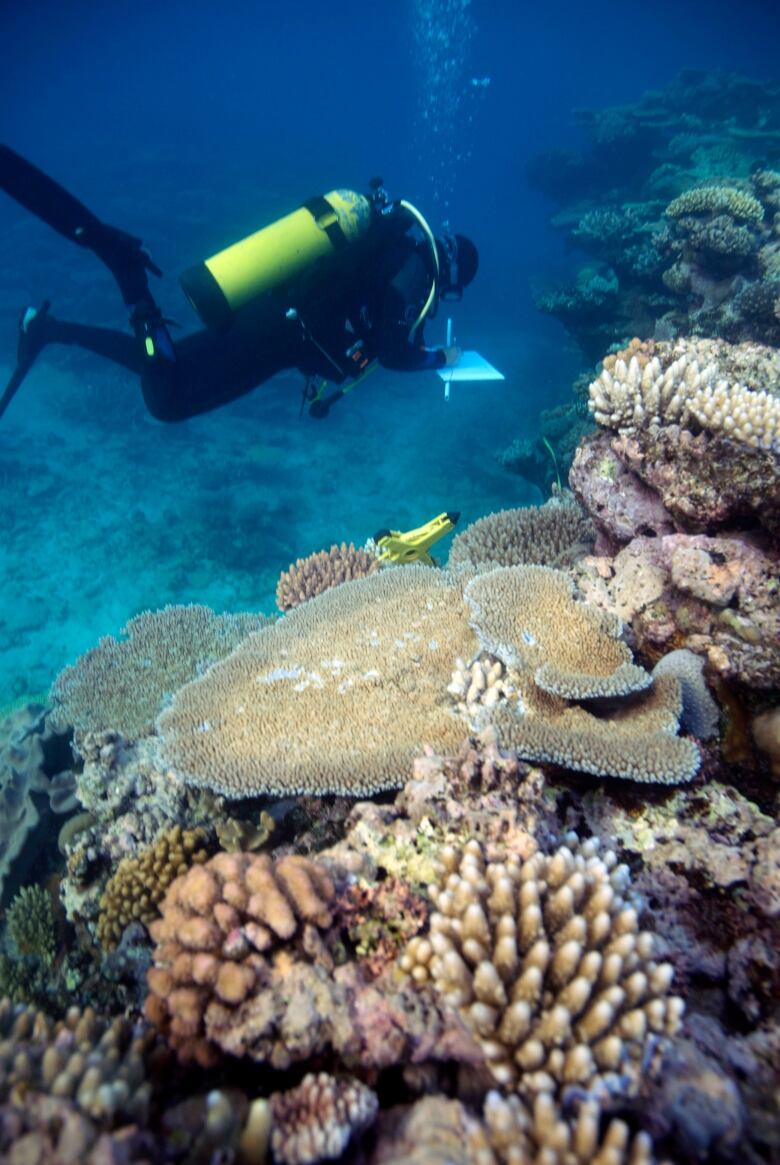
The surveys involved stringing a measuring tape over about 15 metres of coral reef, and having divers examine all the corals within a metre on either side of the measuring tape to see whether they were healthy or diseased.
That was a pretty nice gig in places like Australia's Great Barrier reef that were relatively pristine except for the occasional snagged fishing line, recalled Lisa Kelly, a Canadian from Chapeau, Que.
Kelly, now a PhDstudent at Carleton University in Ottawa, participated in the Australian surveys while doing her master'sdegree at James Cooke University in Townsville, Queensland: "I didn't mind one bit."
But Lamb found a different environment in Southeast Asia, home to some of the world's most diverse and beautiful coral reefs.
Raw-sewage swims
In the waters around Indonesia, the researchers found themselves swimming through raw sewage and dodging plastic garbage that ranged in size from Q-Tips, to potato chip bags, to big plastic sacksan average of around 26 items per 100 square metres. (In Australia, there was less than oneitem in an area twice as big). Overall, the researchers estimated 11.1 billion items are snagged or lodged in coral reefs in the Asia-Pacific region.
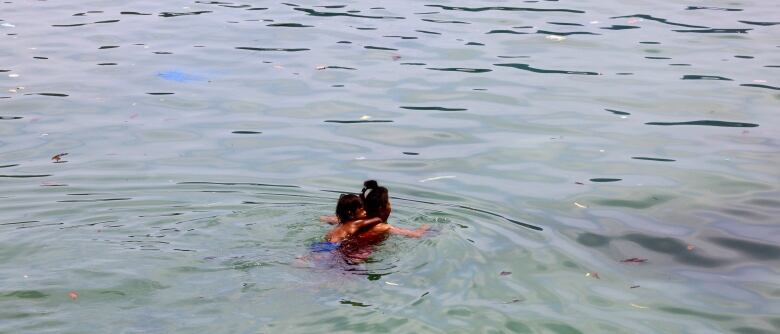
At one point, the researchersrealized they were inadvertently contributing tothe problem the garbage they carefully collected in waste containers aboard the boat they lived in during the survey was being dumped overboard each morning by the local crew.
"That horrified me," Lamb recalled.
Eventually, she realized she should analyze the data see if there was a link between the garbage and the coral diseasesand there was a big one.
Infected wounds
Based on other studies, the researchers think there are a couple of ways the plastic could be causing disease.
The plastic may stress the corals by blocking light and oxygen from reaching them or cut into the coral's flesh or rub against it, creating a wound that bacteria can get in.
It may also create a comfortable environment for bacteria and bring them in contact with the corals, Kelly said. "The bacteria kind of hitch a ride on the plastic."
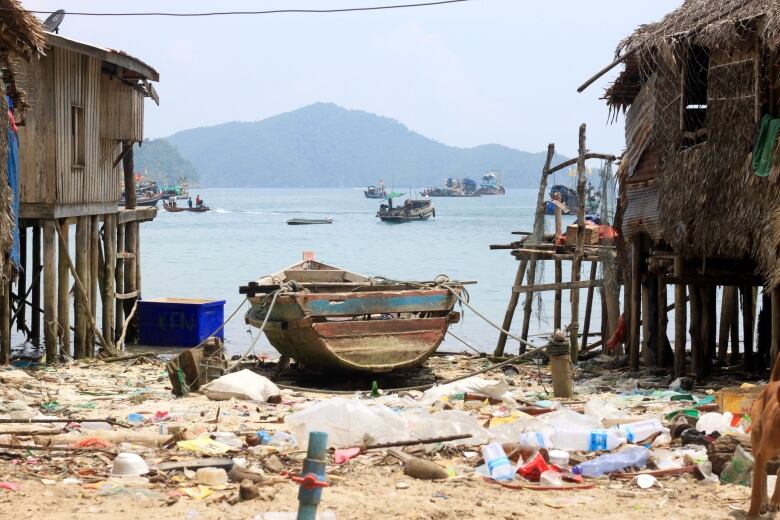
The team's discovery adds to a long list of stresses oncorals from frequent and widespread bleaching linkedto climate change,to overfishing and pollution.
Corals are important habitats for a huge range of marine organisms and key spawning areas and nursery areas for commercially important fish. They also protect coastlines from storms, waves, and erosion, and help nutrients enter and move through the ocean's food webs.
Lamb saidthe good news in light of the findings published in Science is plastic pollution is something that can be more easily dealt with in the short term than many of the other problems, byhelping countries in Southeast Asia reduce the amount of plastic garbage going into the ocean.
Lamb said the study made her more aware about plastic pollution and guilty about her own use of plastic.
It prompted her to take steps like replacing the plastic bags that line the wastebaskets at home with bags made of potato starch.
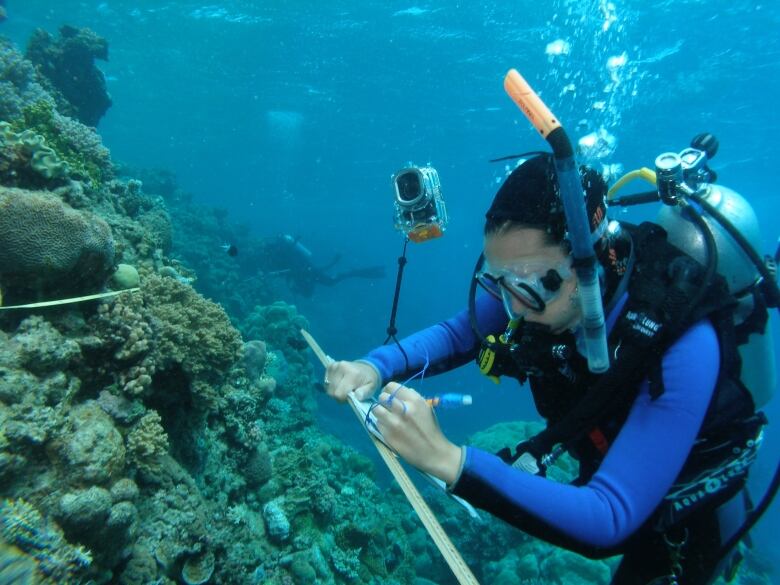
Kelly saidshe no longer uses plastic straws and shopping bags.
Besides Lamb and Kelly, the study involved other researchers from Australia, the U.S., Myanmar, Thailand and Indonesia.
It was funded by The Nature Conservancy, the Australia Institute of Marine Science, the U.S. National Research Council, the Global Environment Facility, the World Bank, U.S. National Oceanic and Atmospheric Administration, the Australian Research Council, the Environmental Defense Fund and Cornell University.












_(720p).jpg)


 OFFICIAL HD MUSIC VIDEO.jpg)
.jpg)



























































































